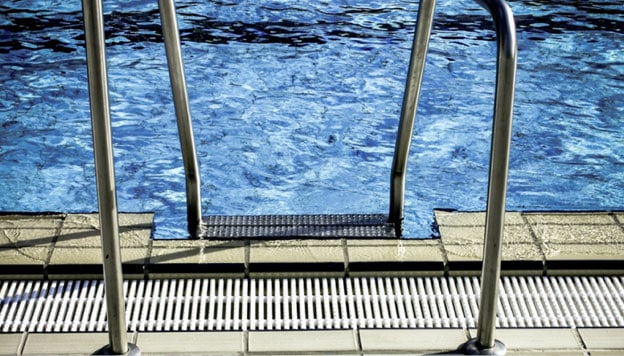"A Journey of a thousand miles begins with a single step" -Lao-Tzu
Swimming is a lifelong skill. For some, it will grow into a sport or a passion. For others, a simple summer pleasure. But whatever path children eventually follows when it comes to swimming, everyone starts somewhere.
Every lifeguard, scuba diver, and Olympian was a complete beginner at some point. For most, that first introduction to the water came about because of a decision made by their parents. So it makes sense that parents want guidance on the best practices for introducing their children to the water.
Congratulations, you’ve already taken the first step!
Even if your child has never set foot in a swimming pool, you’ve already introduced them to the water. Have you played with floating toys in the bathtub? Waded through a storm drain? Splashed in a plastic tub or a fountain? Then your child is already making progress.
Why does this matter? What does letting your toddler play with measuring cups in the sink have to do with learning to swim? Water play not only builds gross motor skills and promotes cognitive development in young children, it also lays an emotional foundation for future swimming: the association of water with fun. While swimming is absolutely a skill, it should never be a chore. Children who are eager to engage with water have a leg up when it comes to learning deep water swimming and safety skills.
Start with one-on-one.
If you have several children who are strong swimmers, you’re undoubtedly good at supervising multiple children at once. When children are first learning to swim, though, it’s important that they get your undivided attention. Deputize another adult to watch after any other children in your care so that you can be there for your new swimmer, both mentally and physically.
Being right there in physical contact with your child gives them confidence (after all, there’s nothing they trust more in the world that your presence) and also allows you to keep a close eye on their emotions and energy levels and step in the moment there seems to be a problem. In our FUNdamental (Level 1) classes, even our trained professionals maintain a ratio of no more than two children to each instructor. That individualized attention is critical at this stage, ensuring that children have a positive experience and don’t end up frightened by the water instead of excited by their growing skills.
Be patient and have fun.
As with walking, talking, and reading, every child learns to swim at their own pace. There is no specific age or rate at which children are expected to develop basic swimming skills. Float together, play together, and laugh together. Consider enrolling your child in developmentally-appropriate swim lessons that will help them gain confidence and strength over an extended period of time, rather than trying to cram a year worth of learning into a few short weeks.
Just as learning to play an instrument or speak a language is a process that takes time and practice, so is learning to swim. Enjoy the process of spending time in the water together! You might even find you miss the experience when they’re older and swimming away.
You are your child’s first introduction to the water, but that doesn’t mean you have to be the only one.
Nor should parents be. Drowning prevention research finds that only formal swim lessons, like those available at The Swim Revolution, reduce a child’s risk of drowning by up to 88%. Informal swim lessons and inconsistent swim lessons, don’t.*
The FUNdamentals swim classes at The Swim Revolution are for children at this exact stage. Want to make sure your child’s first swimming experiences are positive ones? Contact us to speak with one of our instructors and learn more about how we can help make that a reality for your child.
*These facts were found in analysis of drowning and near drowning incidents taken from reports from coroners offices and follow up fact-checking with the families of the deceased.




